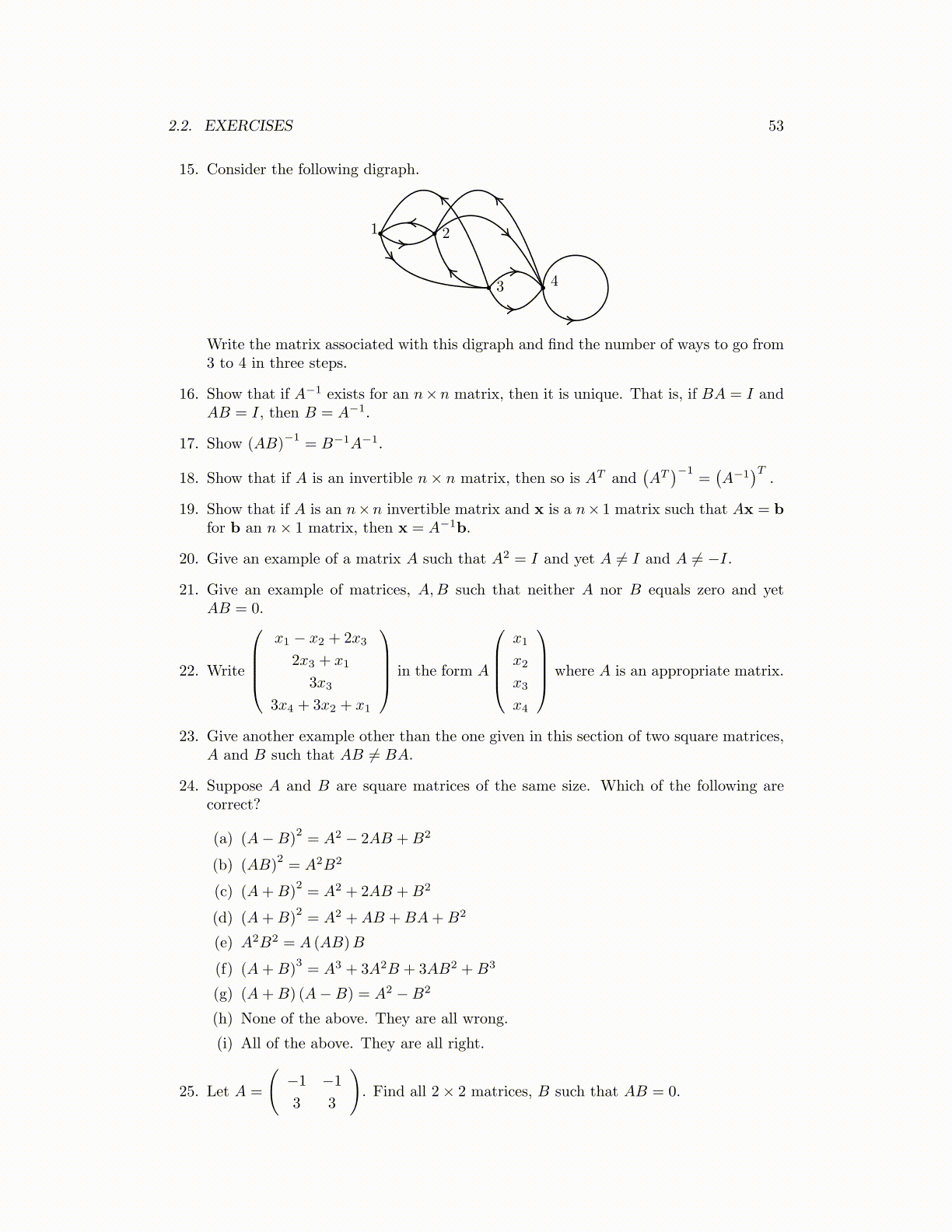
2.2. EXERCISES 53
15. Consider the following digraph.
1 2
3 4
Write the matrix associated with this digraph and find the number of ways to go from3 to 4 in three steps.
16. Show that if A−1 exists for an n×n matrix, then it is unique. That is, if BA = I andAB = I, then B = A−1.
17. Show (AB)−1
= B−1A−1.
18. Show that if A is an invertible n× n matrix, then so is AT and(AT)−1
=(A−1
)T.
19. Show that if A is an n×n invertible matrix and x is a n× 1 matrix such that Ax = bfor b an n× 1 matrix, then x = A−1b.
20. Give an example of a matrix A such that A2 = I and yet A ̸= I and A ̸= −I.
21. Give an example of matrices, A,B such that neither A nor B equals zero and yetAB = 0.
22. Write
x1 − x2 + 2x3
2x3 + x1
3x3
3x4 + 3x2 + x1
in the form A
x1
x2
x3
x4
where A is an appropriate matrix.
23. Give another example other than the one given in this section of two square matrices,A and B such that AB ̸= BA.
24. Suppose A and B are square matrices of the same size. Which of the following arecorrect?
(a) (A−B)2= A2 − 2AB +B2
(b) (AB)2= A2B2
(c) (A+B)2= A2 + 2AB +B2
(d) (A+B)2= A2 +AB +BA+B2
(e) A2B2 = A (AB)B
(f) (A+B)3= A3 + 3A2B + 3AB2 +B3
(g) (A+B) (A−B) = A2 −B2
(h) None of the above. They are all wrong.
(i) All of the above. They are all right.
25. Let A =
(−1 −1
3 3
). Find all 2× 2 matrices, B such that AB = 0.